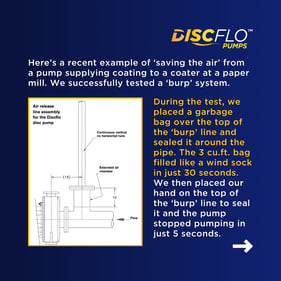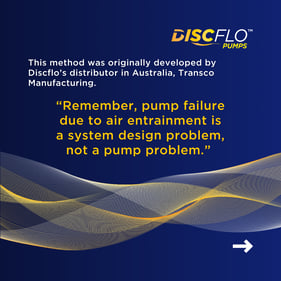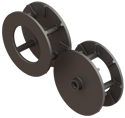In 2021, the pharmaceutical market had a value of $1482.4 million, and is projected to increase to $2067.35 million by 2028. This expected growth is indicative of an increasing demand for healthcare as well as innovative new drugs.
These drugs can often place a strain on manufacturers for a number of reasons, including their viscosity level. For example, a large pharmaceutical manufacturer was using a progressive cavity pump for centrifuge feed of a delicate, expensive crystal slurry. The pump could not handle the liquid, causing it to be leaky, unreliable, and damage the product.
This is just one example of a viscous pharmaceutical and its impact, but, consistently, highly viscous pharmaceuticals can be difficult to manufacture and often pose unique challenges that require innovative solutions.
Viscosity in Pharmaceuticals
 Viscosity refers to how resistant a fluid is to changing shape. In other words, high viscosity fluids are resistant to flow, which makes them difficult to pump. Moreover, viscosity also has a direct relationship with shear sensitivity. Shear sensitive fluids are easily emulsified when a force acts on them.
Viscosity refers to how resistant a fluid is to changing shape. In other words, high viscosity fluids are resistant to flow, which makes them difficult to pump. Moreover, viscosity also has a direct relationship with shear sensitivity. Shear sensitive fluids are easily emulsified when a force acts on them.
High viscosity fluids tend to be thick and heavy, so an ideal pump needs a low minimum stable continuous flow and Net Positive Suction Head - Required (NPSH-R). It might also need to be able to handle air, as thicker fluids can entrap air.
Viscous fluids are known for causing problems for pumps, so let’s break down a few of the most common issues.
Entrained Air
Air pockets are common in viscous fluids, which can result in running dry. This can massively damage many pumps within seconds. For example, pumps that use mechanical seals need liquid against the seal for lubrication. If that pump runs dry, the seal will quickly be destroyed.
Clogs
Viscous fluids are resistant to flow and, thus, can easily create clogs. Clogs can lead to air pockets that cause the pump to run dry or deadhead. Running dry or deadheading can cause violent vibrations that damage the entire pumping system, and result in dangerous messes and expensive downtime.
Excessive Wear
Viscous fluids cause excessive wear on pumps with close tolerances. This wear often leads to expensive maintenance, frequent failures, and constant downtime.
The Future of Pumping Viscous Pharmaceuticals
 Traditional centrifugal, positive displacement, gear, and lobe pumps can all fail to meet the needs posed by viscous pharmaceuticals, but Discflo’s disc pumps, on the other hand, are developed with all of these unique needs in mind.
Traditional centrifugal, positive displacement, gear, and lobe pumps can all fail to meet the needs posed by viscous pharmaceuticals, but Discflo’s disc pumps, on the other hand, are developed with all of these unique needs in mind.
Fluid follows either a turbulent or laminar flow. When in a turbulent flow, the fluid follows an erratic pattern. This is not ideal for a fluid being pumped, as it can cause inconsistencies. A laminar flow is smooth. During laminar flow, the pipe exerts a drag force on the fluid. Thus, the exterior and interior portions move at different velocities.
 Discflo Pumps are designed on the principles of viscous drag and boundary layers to create laminar flow. Our pumps use parallel, rotating Discpacs to transfer energy into this boundary layer and improve the laminar flow. The energy passes from the Discpacs into the boundary layer, increasing the exterior liquid’s velocity. There is no harsh impeller acting on the liquid, and instead, the Discpacs create a smooth, pulsation-free laminar flow, even with highly viscous or shear sensitive pharmaceuticals.
Discflo Pumps are designed on the principles of viscous drag and boundary layers to create laminar flow. Our pumps use parallel, rotating Discpacs to transfer energy into this boundary layer and improve the laminar flow. The energy passes from the Discpacs into the boundary layer, increasing the exterior liquid’s velocity. There is no harsh impeller acting on the liquid, and instead, the Discpacs create a smooth, pulsation-free laminar flow, even with highly viscous or shear sensitive pharmaceuticals.
Discflo’s patented design also achieves a low minimum continuous stable flow, as well as a Net Positive Suction Head - Required (NPSH-R) one-third of other available pumps on the market. Discflo disc pumps can also handle up to 25% air in the line thanks to the Discpacs.
Ultimately, Discflo pumps prevent clogging, entrained air, and excessive wear while also decreasing maintenance and downtime spent re-sanitizing equipment after a failure.
No Close Tolerances
A Discflo disc pump is not a centrifugal, positive displacement, gear, or lobe pump. The unique design of the parallel, rotating Discpacs allows Discflo Pumps to outperform traditional pumps in numerous applications in part because it has no close tolerances.
No Radial Loads or Impingement
The design of our patented Discpacs harnesses the natural power of viscous drag and boundary layer to move viscous materials without radial loads or impingement.
Non-Pulsating Laminar Flow
Using viscous drag, the fluid is essentially pulled through the pump without impingement, which creates a smooth, non-pulsating laminar flow..
No Reduced Performance Efficiencies
Because there are no closer tolerances and impingement, there is no metal-to-metal wear, which results in no reduction in performance efficiencies. This also allows for minimal maintenance.
Low NPSH Requirements
Laminar flow prevents reduction in head and capacity while further reducing noise and vibration. In the same service conditions, the NSPH-R of a Discflo disc pump is about half to one-third that of a centrifugal pump.
How to Start Efficiently Pumping Viscous Pharmaceuticals Today
Discflo disc pumps provide a comprehensive solution for pumping viscous pharmaceuticals that can cause traditional pumps to run dry or deadhead. We make the most difficult pumping situations simple, like the delicate crystal slurry we referenced at the start of the blog.
For that pharmaceutical manufacturer, we installed a pump that could run dry without deadheading, created a laminar flow that did not damage the slurry, and saved them money on product loss as well as maintenance.
Using our patented Discpac technology to harness the power of viscous drag through the boundary layer, our disc pumps create a smooth, laminar flow that can reduce your maintenance needs and downtime when manufacturing pharmaceuticals. This can result in less time spent sanitizing, verifying processes, and problem solving.
If you want to see how a disc pump can change your organization, contact our team below.

